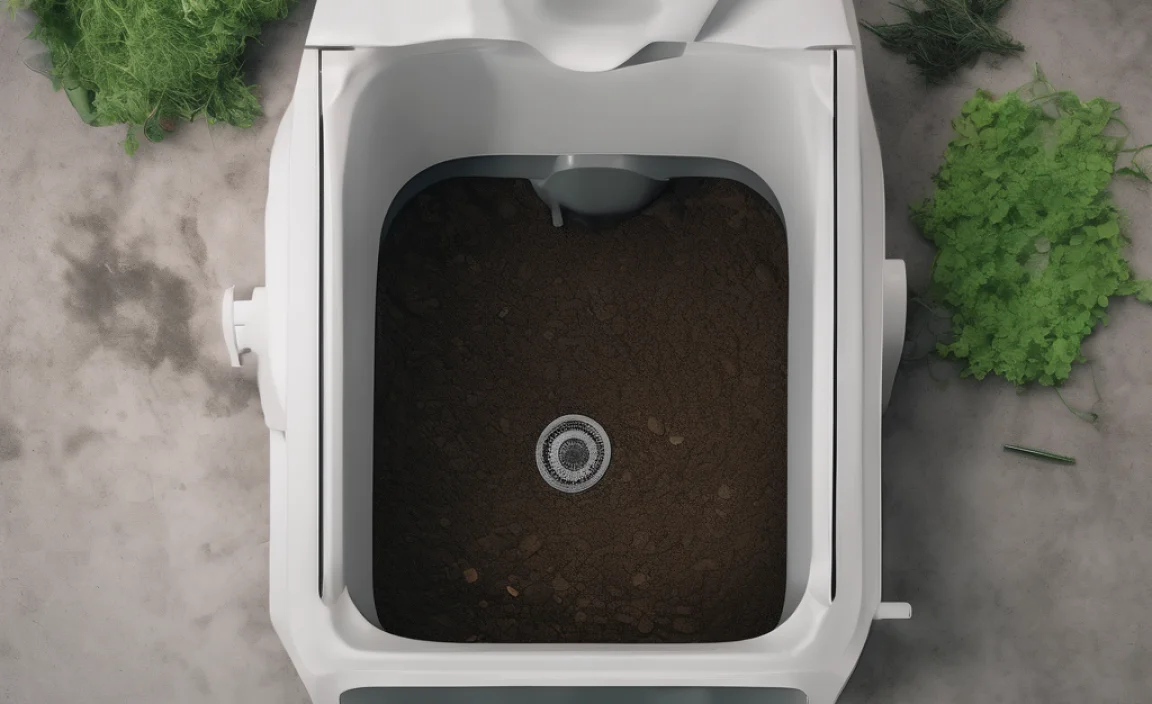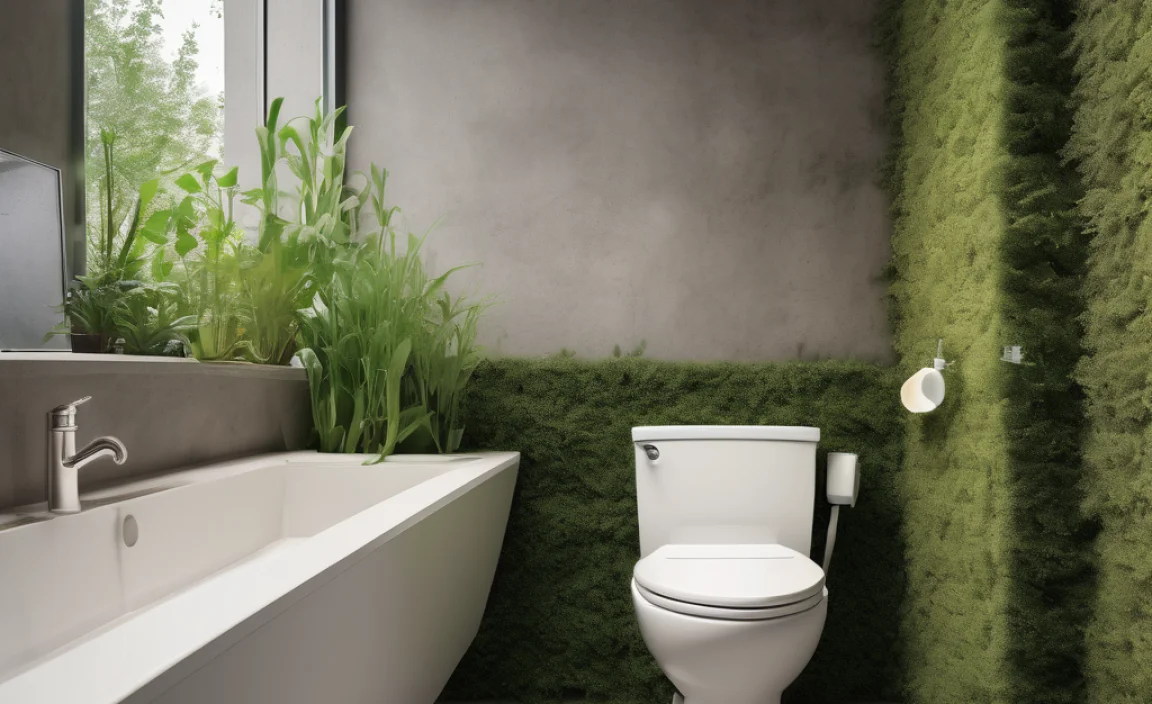Have you ever wondered how a toilet can help nature? The compost toilet process does just that! This special toilet uses natural methods to turn waste into useful compost. It’s like a mini-factory that helps the earth. Curious about how this works? Let’s explore the fascinating world of compost toilets together.
Key Takeaways
- Compost toilets turn waste into useful compost.
- No water is needed for compost toilet process.
- They help reduce water usage and waste.
- The compost toilet process is eco-friendly.
- Learn how compost toilets benefit our planet.
Understanding the Compost Toilet Process

The compost toilet process uses nature to break down waste. It doesn’t need water like regular toilets. Instead, it uses air, bacteria, and time. The waste turns into compost, which enriches the soil. This process is simple and clean. Compost toilets have special chambers for waste. These chambers keep the waste out of sight and smell-free. Over time, the waste turns into dry, harmless compost. This compost can help plants grow strong and healthy.
- Compost toilets use natural processes to break down waste.
- They don’t require water to flush.
- Air and bacteria work together in this system.
- Compost is safe and nutrient-rich for soil.
- The process reduces waste and water usage.
- They are perfect for eco-friendly homes.
Compost toilets are a great choice for places without plumbing. They are used in cabins, campsites, and even some homes. This system helps reduce water use and pollution. By turning waste into compost, these toilets save resources. Many people enjoy using compost toilets because they know they’re helping the earth. This process is not only about waste. It’s about giving back to nature in a simple way.
Fun Fact: Some compost toilets can handle up to 50 users a day!
How Does a Compost Toilet Work?
A compost toilet has a simple design. Waste falls into a special container. Here, air flows through to help dry it out. This dryness prevents smells and helps the composting process. Helpful bacteria and microorganisms break down the waste. They turn it into compost over weeks or months. It’s like how leaves turn into soil in a forest.
Once the waste turns into compost, it’s safe to handle. But how long does it take? This depends on the toilet design and how often it’s used. Some compost toilets need about six months to a year to produce compost. Isn’t it amazing how nature does all this work for us? Next time you see a compost toilet, remember the neat process happening inside.
Types of Compost Toilets
There are many types of compost toilets. The most common are self-contained and central systems. A self-contained system has the composting chamber right below the seat. It’s great for small spaces. Central systems have the chamber away from the toilet seat. This type is used in larger buildings with more users. Both types work on the same composting principles.
Some compost toilets come with fans or heaters to speed up the process. Others use a rotating drum to mix the waste. This helps it break down faster. Each type has its own benefits. Choosing the right one depends on your needs and space. Isn’t it neat how many options there are for compost toilets?
Benefits of Using Compost Toilets
Compost toilets offer many benefits. They save water by not using flushes. This is important in areas with water shortages. They also reduce the amount of waste in landfills. Because they turn waste into compost, they also help gardens. Plants grow better with nutrient-rich compost from these toilets.
Another benefit is the reduced environmental impact. Using less water means less energy is needed to treat wastewater. This is good for the planet. Compost toilets also teach us about sustainable living. By using one, you’re making a positive difference!
Components of a Compost Toilet

Compost toilets have a few key parts. There’s the toilet seat, which looks like a regular toilet. Below it is the composting chamber where the magic happens. Some systems have fans or vents to control odor, while others have stirring rods to mix the waste.
There’s also a finishing drawer in some models. This is where the finished compost is collected. Once it’s ready, you can use the compost in gardens. Each part of the compost toilet works together with nature to handle waste. It’s a smart and eco-friendly design.
Fun Fact: A family of four can save about 6,000 gallons of water yearly with a compost toilet.
The Role of Microorganisms
Microorganisms are tiny helpers in the compost toilet process. They break down waste into compost. These tiny creatures need air, moisture, and warmth to work best. They eat the waste and change it into useful compost. This is a natural recycling process.
Microorganisms are in soil, helping plants grow by making nutrients. In a compost toilet, they do the same job. They make sure the waste turns into safe, rich compost. Isn’t it amazing how these tiny creatures help both toilets and gardens?
Maintaining a Compost Toilet
Taking care of a compost toilet is important. Regular maintenance keeps it working well. Always keep the toilet seat closed to control odor. Add dry materials like sawdust or coconut coir to help the composting process. Check and empty the compost chamber when it’s full.
Proper maintenance keeps the compost toilet process efficient. It ensures the compost is safe and ready to use. With a little care, these toilets can serve you well for a long time. Isn’t it great that a small effort can make such a big difference?
Comparing Compost and Regular Toilets
How do compost toilets compare to regular ones? Let’s find out.
| Feature | Compost Toilet | Regular Toilet |
|---|---|---|
| Water Usage | None | High |
| Energy Use | Low | High |
| Waste Output | Compost | Sewage |
| Environmental Impact | Low | High |
Compost toilets are eco-friendly and conserve resources. Regular toilets use lots of water and energy. They also create sewage, which needs treatment. Compost toilets create compost, which benefits gardens. Choosing a compost toilet helps the earth.
Fun Fact: There are over 2 billion people without access to proper sanitation!
Conclusion
The compost toilet process is a simple, eco-friendly way to handle waste. It uses nature’s methods to turn waste into rich compost. This helps reduce water use and pollution. Compost toilets are great for the environment. They teach us about sustainability and caring for our planet.
FAQs
Question: How does a compost toilet work?
Answer: A compost toilet uses natural processes to break down waste. Instead of water, it uses air and microorganisms. These turn waste into compost over time. This compost can then enrich the soil.
Question: Is a compost toilet safe to use?
Answer: Yes, it’s safe. The compost toilet process turns waste into harmless compost. Proper maintenance ensures it stays odor-free. The compost produced is safe for gardens.
Question: What are the benefits of compost toilets?
Answer: Compost toilets save water, reduce waste, and create compost. They’re eco-friendly and lessen environmental impact. This makes them a great choice for sustainable living.
Question: Can I install a compost toilet at home?
Answer: Yes, you can! Compost toilets are suitable for homes, cabins, and even campsites. They don’t need plumbing and are easy to install. This makes them versatile and convenient.
Question: How long does it take to make compost?
Answer: The composting time depends on the toilet and usage. It can take from six months to a year. Regular care and maintenance help speed up the composting process.
Question: Can compost from these toilets be used in gardens?
Answer: Yes, the compost is great for gardens. It enriches the soil with nutrients. This helps plants grow strong and healthy, supporting a thriving ecosystem.
.lwrp.link-whisper-related-posts{
margin-top: 40px;
margin-bottom: 30px;
}
.lwrp .lwrp-title{
}.lwrp .lwrp-description{
}
.lwrp .lwrp-list-container{
}
.lwrp .lwrp-list-multi-container{
display: flex;
}
.lwrp .lwrp-list-double{
width: 48%;
}
.lwrp .lwrp-list-triple{
width: 32%;
}
.lwrp .lwrp-list-row-container{
display: flex;
justify-content: space-between;
}
.lwrp .lwrp-list-row-container .lwrp-list-item{
width: calc(25% – 20px);
}
.lwrp .lwrp-list-item:not(.lwrp-no-posts-message-item){
max-width: 150px;
}
.lwrp .lwrp-list-item img{
max-width: 100%;
height: auto;
object-fit: cover;
aspect-ratio: 1 / 1;
}
.lwrp .lwrp-list-item.lwrp-empty-list-item{
background: initial !important;
}
.lwrp .lwrp-list-item .lwrp-list-link .lwrp-list-link-title-text,
.lwrp .lwrp-list-item .lwrp-list-no-posts-message{
}@media screen and (max-width: 480px) {
.lwrp.link-whisper-related-posts{
}
.lwrp .lwrp-title{
}.lwrp .lwrp-description{
}
.lwrp .lwrp-list-multi-container{
flex-direction: column;
}
.lwrp .lwrp-list-multi-container ul.lwrp-list{
margin-top: 0px;
margin-bottom: 0px;
padding-top: 0px;
padding-bottom: 0px;
}
.lwrp .lwrp-list-double,
.lwrp .lwrp-list-triple{
width: 100%;
}
.lwrp .lwrp-list-row-container{
justify-content: initial;
flex-direction: column;
}
.lwrp .lwrp-list-row-container .lwrp-list-item{
width: 100%;
}
.lwrp .lwrp-list-item:not(.lwrp-no-posts-message-item){
max-width: initial;
}
.lwrp .lwrp-list-item .lwrp-list-link .lwrp-list-link-title-text,
.lwrp .lwrp-list-item .lwrp-list-no-posts-message{
};
}

